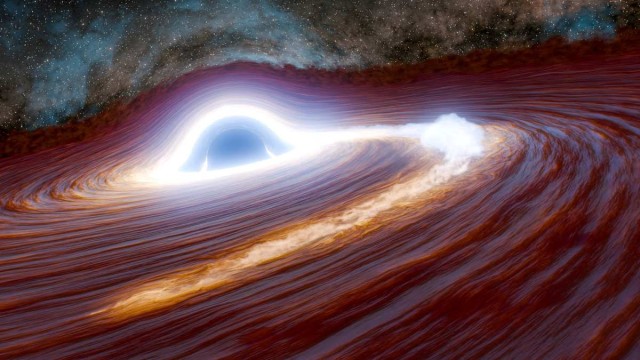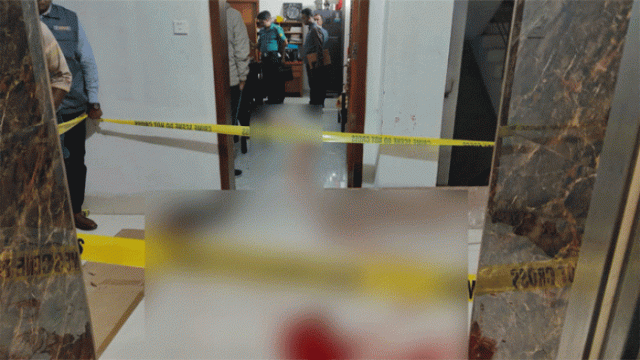Washington, Nov 21 (V7N) — Astronomers have documented the most powerful flare ever recorded from a supermassive black hole, triggered when the black hole tore apart and consumed an enormous star that ventured too close.
Researchers reported that the flare reached a brightness 10 trillion times greater than the sun at its peak. The event occurred in a distant galaxy located roughly 11 billion light-years from Earth, powered by a black hole estimated to be 300 million times the mass of the sun.
Supermassive black holes, found at the centers of most galaxies, exert gravitational forces so intense that not even light can escape. The black hole responsible for this flare is far more massive than the one at the center of the Milky Way, which has about 4 million solar masses.
According to the study, published on November 4 in Nature Astronomy, the most likely cause of the flare was the catastrophic destruction of a giant star. As the star drifted too close, gravitational forces stretched it into a thin, elongated stream of material—a process known as “spaghettification.” That stellar debris then spiraled inward, heating up dramatically and producing an extraordinary flare of energy as it crossed the black hole’s point of no return.
Researchers estimate the doomed star was at least 30 times, and possibly up to 200 times, the mass of the sun—an exceptionally rare size, as massive stars are both less common and short-lived. They believe the star likely belonged to a population orbiting near the black hole and may have been pushed onto a dangerously close trajectory after a collision or gravitational interaction with another large object.
Caltech astronomer Matthew Graham, lead author of the study, said the star was likely knocked into a highly elliptical orbit, bringing it fatally close to the black hole.
Once the star was disrupted, its gas heated intensely as it spiraled inward, generating a flare more luminous than any previously observed from a black hole. The flare brightened 40-fold during observations and peaked in June 2018. It was 30 times brighter than the strongest black hole flare seen before.
Astronomers monitored the event using telescopes in California, Arizona and Hawaii, ruling out other potential causes such as a supernova, a jet emitted by the black hole, or gravitational lensing.
Because the black hole lies so far from Earth, the event observed today actually occurred billions of years ago. Although the flare has begun to fade, scientists expect the full process of stellar destruction and accretion to continue for about 11 years in total.
News source Reuters:
END/WD/SMA/




























Comment: